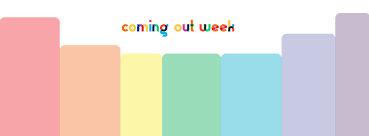The week of Oct. 7 marks the beginning of Coming Out Week, dedicated to the expression of the identities of LGBTQ students.
“Here at Mizzou, October is a pretty significant month for us,” Olmstead said. “On Oct. 11, 1995, our center first opened, which is also coincidentally Coming Out Day, and I think that is something significant to be aware of.”
Not only does October celebrate Coming Out Week, but LGBTQ History Month is also celebrated as a way for LGBTQ students to express identity pride while educating others on their culture and community.
“LGBTQ History Month is during the month of October,” LGBTQ Resource Center Coordinator Sean Olmstead said. “It’s typically something that we’ve seen celebrated on college campuses as a way to both reflect on the past and the movements that have existed to advance rights for the lesbian, gay, bisexual, transgender and queer individuals.”
Many LGBTQ students on campus also celebrate LGBTQ History Month by looking at the progress of LGBTQ rights over the last few decades, how they have improved and what can be done to improve them further.
“LGBTQ History Month is really an opportunity to look back on how far we’ve come and how far we still need to go,” sophomore Anthony Overton said. “Having a whole month dedicated to the LGBTQ community is a chance for everyone to speak about it.”
For many LGBTQ students on campus, LGBTQ History Month and Coming Out Week are not only ways to better get to know their community’s history, but to also feel supported by others with similar identities.
“I think what’s cool about the LGBTQ community is knowing that there are other people like you and knowing that you are okay,” Overton said. “Being here and being able to be surrounded by people that validate how you’re feeling is good.”
In the past, the number of LGBTQ organizations involved on campus was small, and for Olmstead, watching this number grow over the years has been one of the LGBTQ Resource Center’s main accomplishments.
“We’ve seen student organizations go from having one organization in the late ‘90s called Gay Liberation Front, to having about nine or 10 student organizations that relate to gender and sexuality,” Olmstead said. “It’s interesting to see that develop, whereas on our campus 40 years ago, none of that existed.”
Not only is LGBTQ History Month a way for the those who identify as LGBTQ to celebrate their history, but it is also a way for those who do not identify with the community to become involved with the LGBTQ Resource Center and community.
“Most of the stuff that we market and advertise for is welcome to anybody, even if they don’t identify,” Olmstead said. “When I see someone who’s not in my community say that this is important, that shows a sense of support and a sort of care for us.”
One of the biggest events held during the month of October is the annual Pride Photo, in which LGBTQ students gather together for a photo to commemorate how their community has grown.
“I will say I love the Pride Photo because it’s really cool to see all these people come together,” Olmstead said. “I love seeing people who bring their kids, who come and bring their favorite super queer outfit that they want to wear, or who get excited to wear their identity flag they have.”
Although many students are in favor of LGBTQ History Month and what it represents, others see it as excessive considering that LGBTQ communities already have a Pride Month in June.
“October is Breast Cancer Month, and from Sept. 15 to Oct. 15 it is also Hispanic Heritage Month,” sophomore Alyx Kalleberg said. “My point of view, I guess, is that we already have Pride Month, where we celebrate being us and recognizing our history as well. We don’t need two months.”
Despite this idea that October’s main focus should be placed elsewhere, many people still enjoy LGBTQ History Month and Coming Out Week and look forward to its many events and discussions.
“When an organization has a panel discussion where people are literally sharing their personal identities to strangers, I think it’s a really cool thing that we should treasure and support,” Olmstead said. “I think that’s probably my favorite part of Coming Out Week– to see the things that students say.”
_Edited by Caitlyn Rosen | [email protected]_








